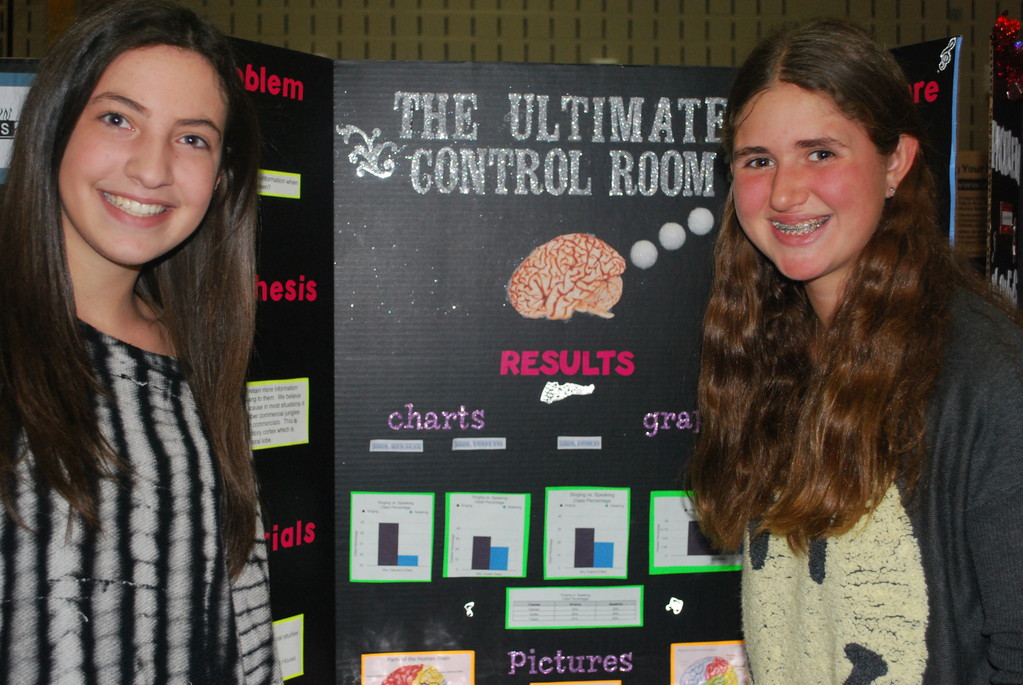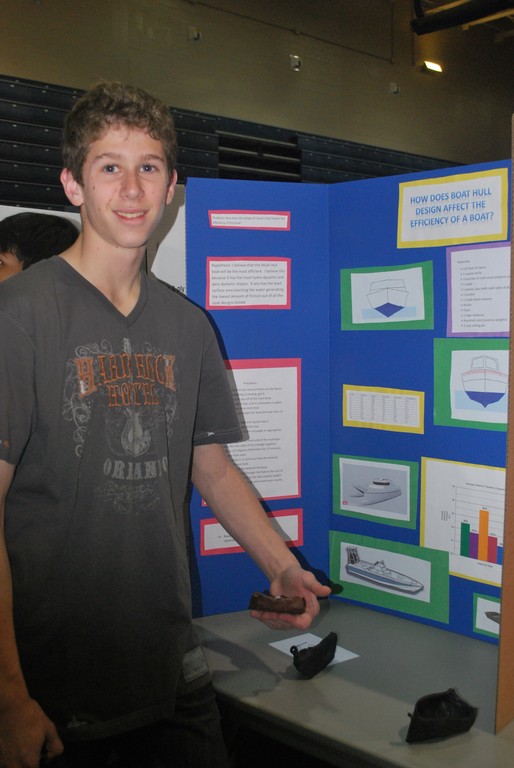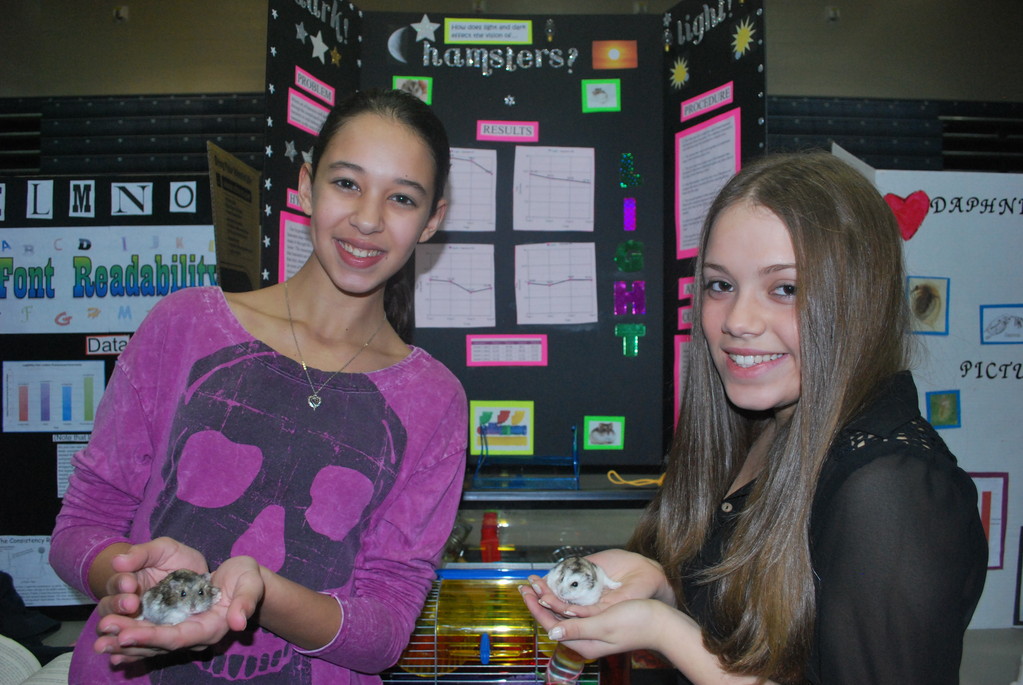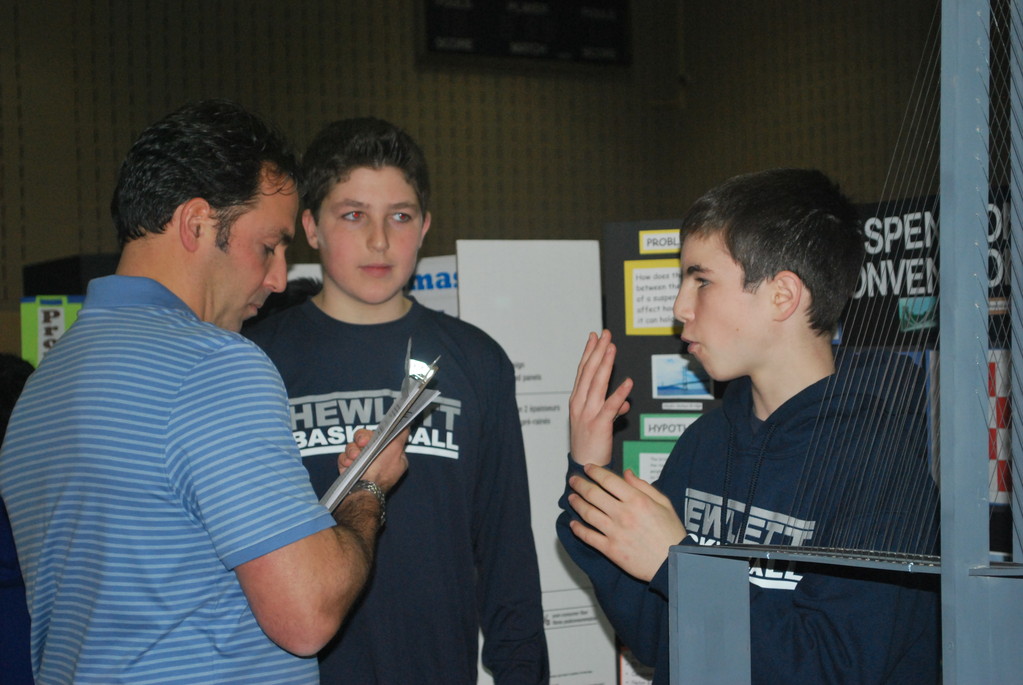Exercising their scientific muscle
Woodmere Middle School holds eighth-grade science fair
Nearly 170 booths lined the Woodmere Middle School gym floor on Jan. 11 for the eighth grade science fair. The projects ranged from investigating how does temperature affect fruit ripening to how handwriting shows personality.
At booth 103, Zach Bromfeld and Kyle Hoberman had a suspension bridge made out of wood and fishing wire. Their project compared how a 2-, 3- and 4-foot bridge would hold weight. Their hypothesis was the shorter span would hold the most weight without breaking and they were right.
“We learned about construction,” Bromfeld said. “We learned about famous bridges and the different materials that are used,” Hoberman said.
Jessica Keeler wanted to know if color affects decision making. Using her peers — eighth grade girls — as the focus group she found her premise that color doesn’t affect thinking was wrong. “I learned about the frontal lob and cerebral cortex of the brain,” she said.
Comparing hamsters in light and dark was the subject of Sapir Riskovich and Kristyn Casali’s project. They had four hamsters and created a maze. They found that hamsters being nocturnal animals adapted and ran faster in the dark than light.
“We found that hamsters, like people, use other senses,” Casali said. “The hamsters can compensate for what they don’t have, Riskovich said.
Spurred by a science class discussion on boats, Alec Krueger examined boat hull efficiency. Not a boater, but interested, Krueger compared four different designs and found that it depends on hull design and use. “I learned about aerodynamics from the different kinds of boat designs,” he said.
Speaking then singing the preamble of the Constitution to the same students showed Erin Schechter and Mychael Schnell that using a song to remember retain information could be the way to go. There was a 11 percent difference in memory for those hearing the preamble sung compared to it being spoken.
“They did better with the singing and remembered more information,” Schecter said. “I learned that the brain is split into two halves, the left side and the right side, I thought it was whole,” Schnell said.

 45.0°,
Mostly Cloudy
45.0°,
Mostly Cloudy 













